Large Crabgrass
- Grass (Poaceae family):
- Digitaria sanguinalis (L.) Scop.
- EPPO code:
- DIGSA
- Other names:
- Finger grass, hairy crabgrass, tumbleweed
Species information
- Lifecycle:
- Annual.
- Propagation:
- Reproduces by seed.
- Emergence:
- Usually, large crabgrass is one of the last annual grass species to emerge. It is considered a mid- to late-season weed.
- Habitat:
- Large crabgrass is commonly found in cultivated fields and lawns throughout Ontario.
- Competitiveness:
- Agriculture and Agri-Food Canada research has shown that large crabgrass densities of 20,000 plants/ac can result in 3% yield losses in corn and soybeans.
- Resistance:
- There are large crabgrass populations resistant to Group 1 (for example, quizalofop, sethoxydim) herbicides in Ontario.
Identification clues
- Auricles:
- None.
- Ligule:
- Membranous.
- Leaf blade:
- Hairy on both sides.
- Leaf sheath:
- Hairy, although the margin of the leaf sheath is hairless.
- Stem:
- Round.
- Seed heads:
- Finger-like with several thin and slender spikes.
- Roots:
- Fibrous.
Often mistaken for
I know it's not Proso millet because large crabgrass has a membranous ligule, but proso millet has a hairy ligule.
I know it's not Smooth crabgrass because large crabgrass is extremely hairy, but smooth crabgrass is relatively hairless.
I know it's not Witchgrass because large crabgrass has a membranous ligule, but witchgrass has a hairy ligule.
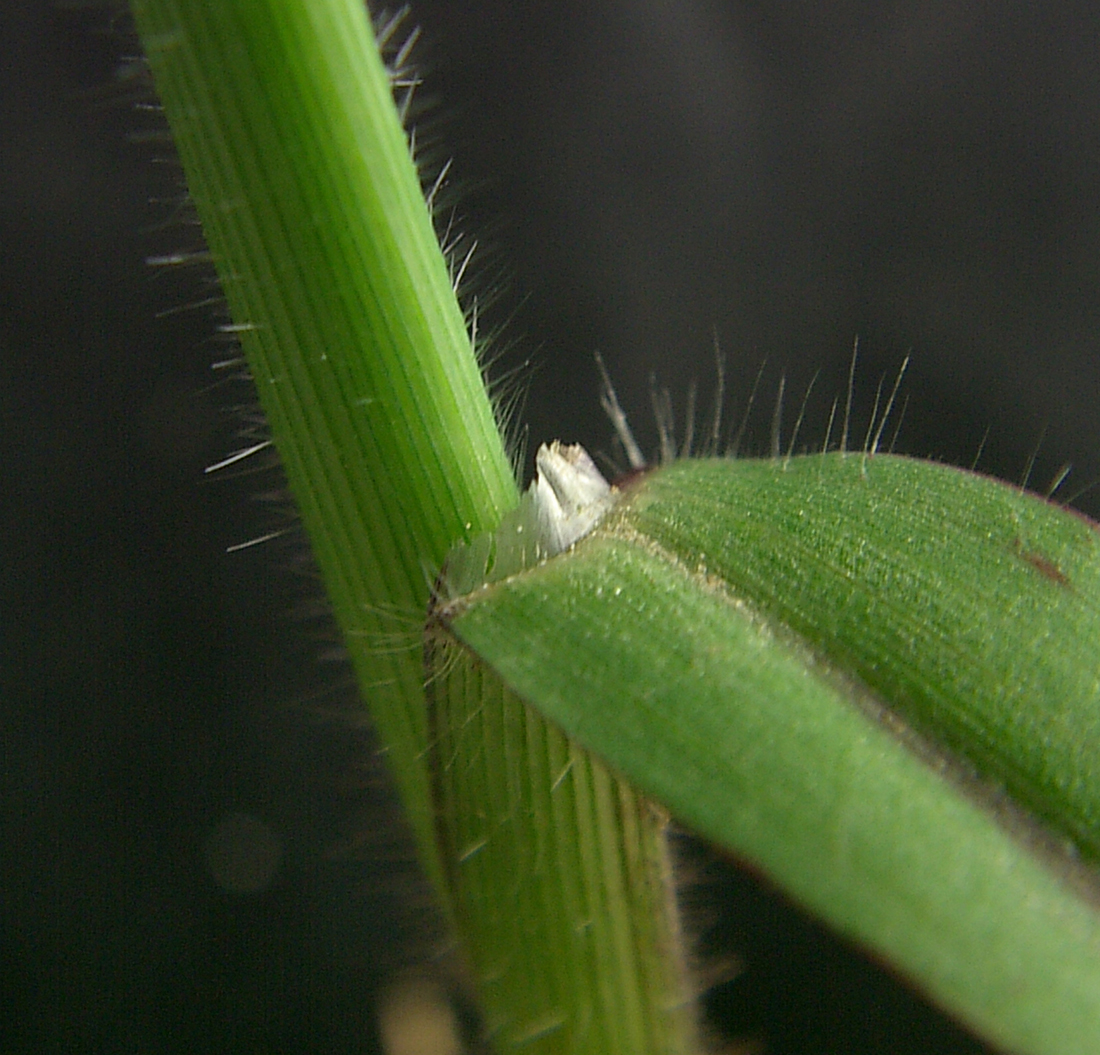
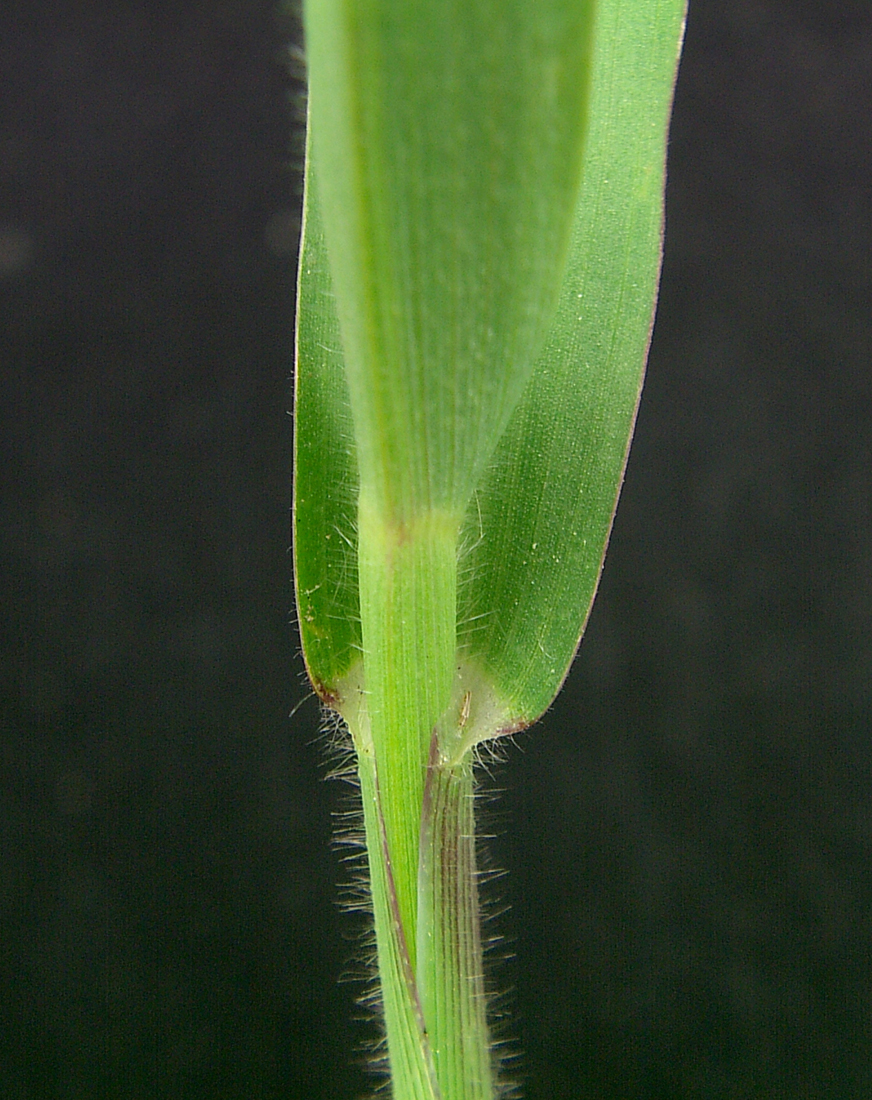
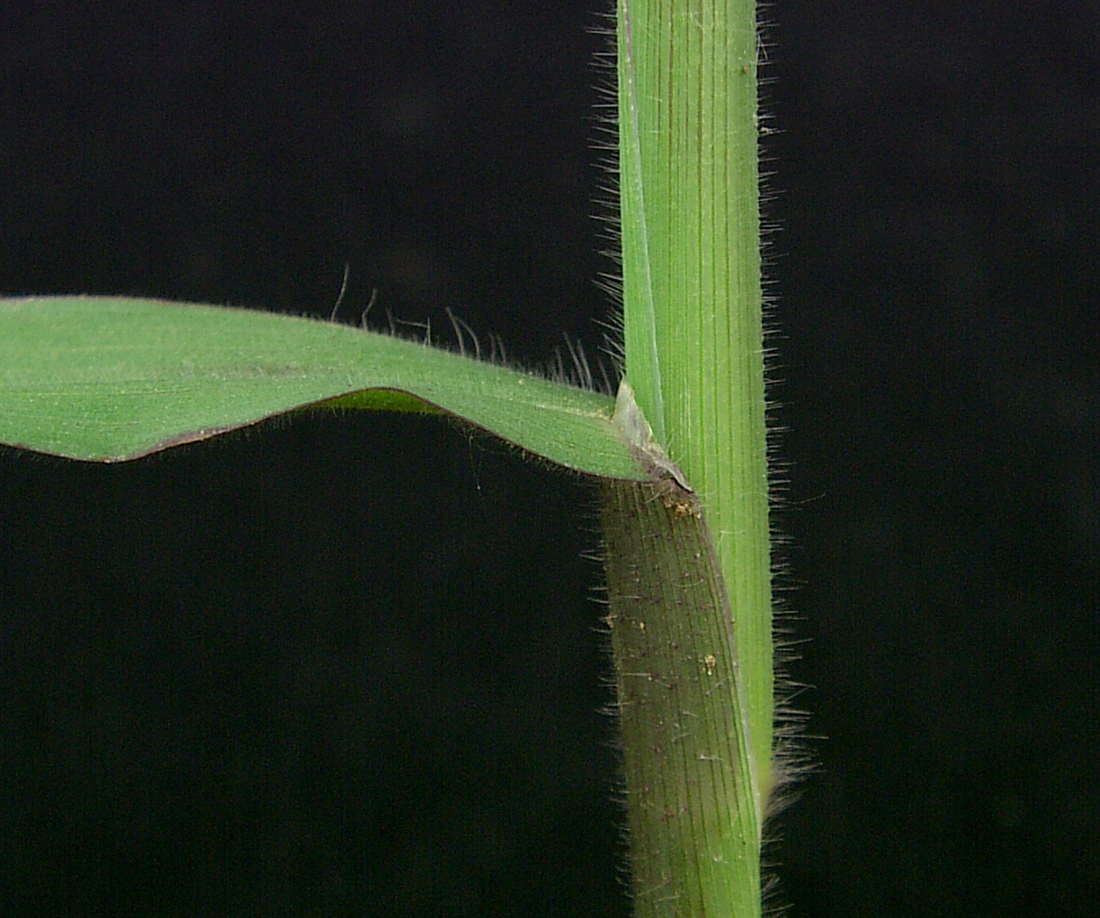
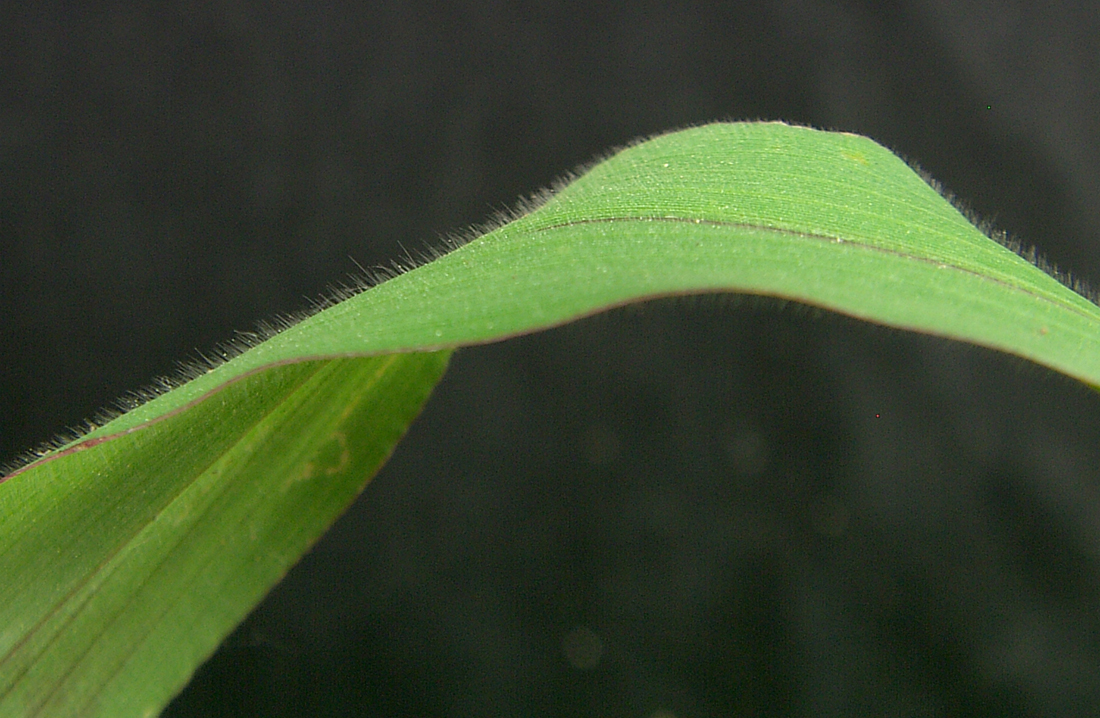
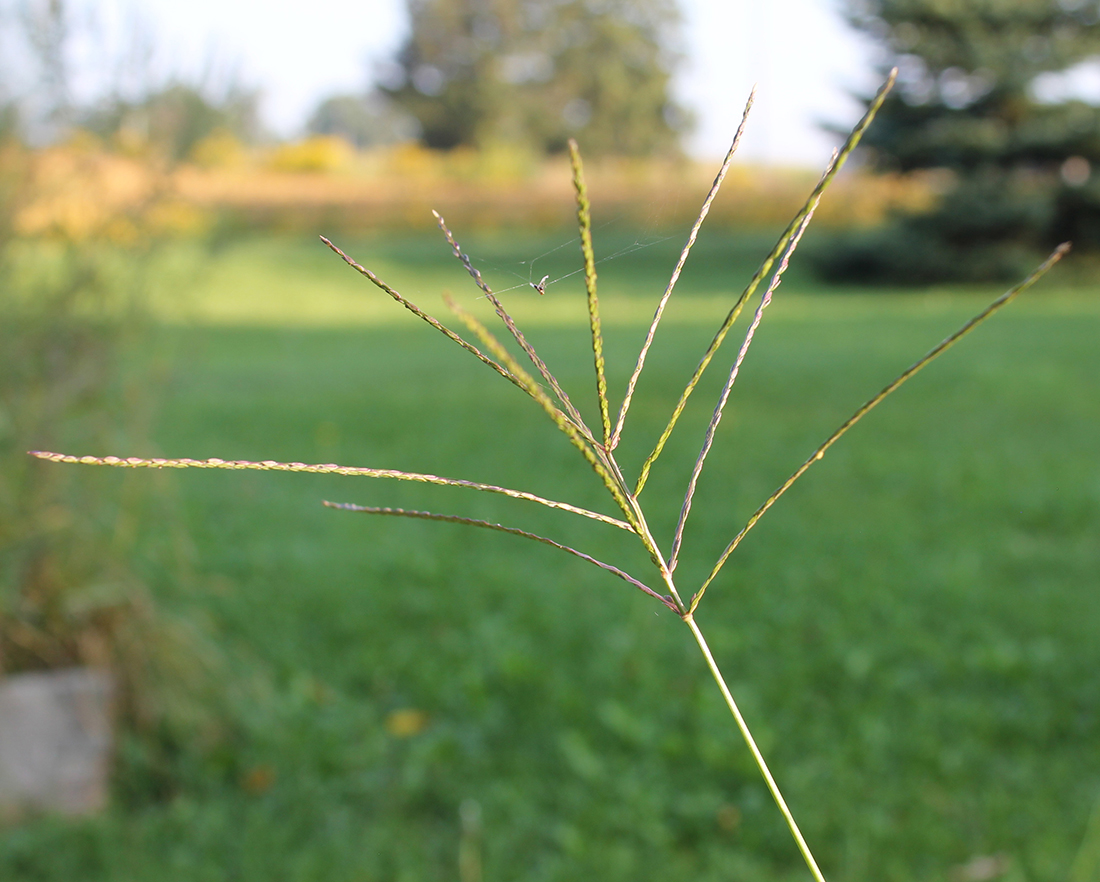
Updated: January 13, 2023
Published: January 13, 2023